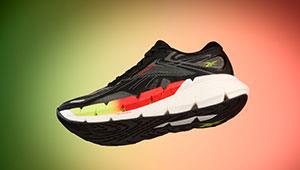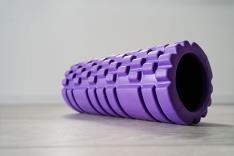
For the last few years, more and more runners and training professionals have been touting the bene?ts of running with a mid-foot landing, rather than the more common heel-strike. Many agree that a mid-foot landing is more natural. Have you tried running in place with no shoes on? You'll never land on your heel.
The human foot is an amazing structure, built with 26 bones, 33 joints and over one hundred muscles, ligaments and tendons. The arch is a beautifully designed spring mechanism that feeds energy to our calves, quads and hips and lets us run gracefully and painlessly, if we just let it do its job.
The running shoe we see most often today has been around since about the mid 80s, when more of the general masses started to take up running. The athletic shoe industry figured that the average jogger might want more comfort than the serious athlete, who had up until then influenced the market toward a more lightweight racing shoe.
Major shoe companies decided to add cushioning and a raised heel to the running shoe, leading to the heel-strike form. Essentially they made running feel like walking. It must have seemed like a good idea at the time.
Since then we have seen an explosion of runners, but we have also seen an explosion of knee problems, heel spurs, plantar fasciitis, ankle sprains, and the list goes on. Many believe that the super-cushioned, gel-?lled, motion-control features of the modern running shoe have dimmed the natural movement of our feet and disrupted our skeletal balance, causing unnecessary injuries.
Because of this, some runners are setting their feet free. Some go completely barefoot while others are choosing to lighten up on their footwear, wearing shoes closer to what runners wore in the old days, with little to no cushioning and no pronation control. No bells and whistles.
Runners today are taking back their mid-foot and reaping the bene?ts with less injuries and more enjoyable runs. If you're up for the challenge of finding your mid-foot and improving your running form, here are some tips to follow:
1. Lose the shoes.
Bare feet are your best teacher. If you aren't comfortable going totally bare, try some lightweight footwear. You can choose anything from running sandals, to water shoes, to a high-tech pair of minimalist running kicks.
The things to look for in a minimalist shoe are:
- no significant lift from the toe to heel (4mm or less) or none at all (often marketed as "zero-drop")
- very little to no cushioning
- an extra flexible sole
- plenty of room for your toes to spread and move
If you absolutely cannot part with your cushioned trainers, that's okay. You can still improve your running form with these next tips.
2. Stop landing on your heel.
The key to good form is contacting the ground with the front half of your foot first. This is more difficult to do in heavy trainers, and next to impossible to avoid when barefoot. The exact contact spot varies from person to person. Some land on the ball of their foot (forefoot landing), but most land somewhere in the middle (mid-foot landing).
Your heel should still touch the ground briefly. However, it should not carry a large weight load. Most of your weight should be directly above your mid-foot. As soon as your heel makes contact, your arch and lower leg muscles can gather the spring they need to move your body forward. This way you can land much more lightly and bounce out of each stride rather than pound the ground.
- 1
- of
- 2
Get ACTIVE on the Go


Couch to 5K®
The best way to get new runners off the couch and across the finish line of their first 5K.
Available for iOS | Android







Discuss This Article